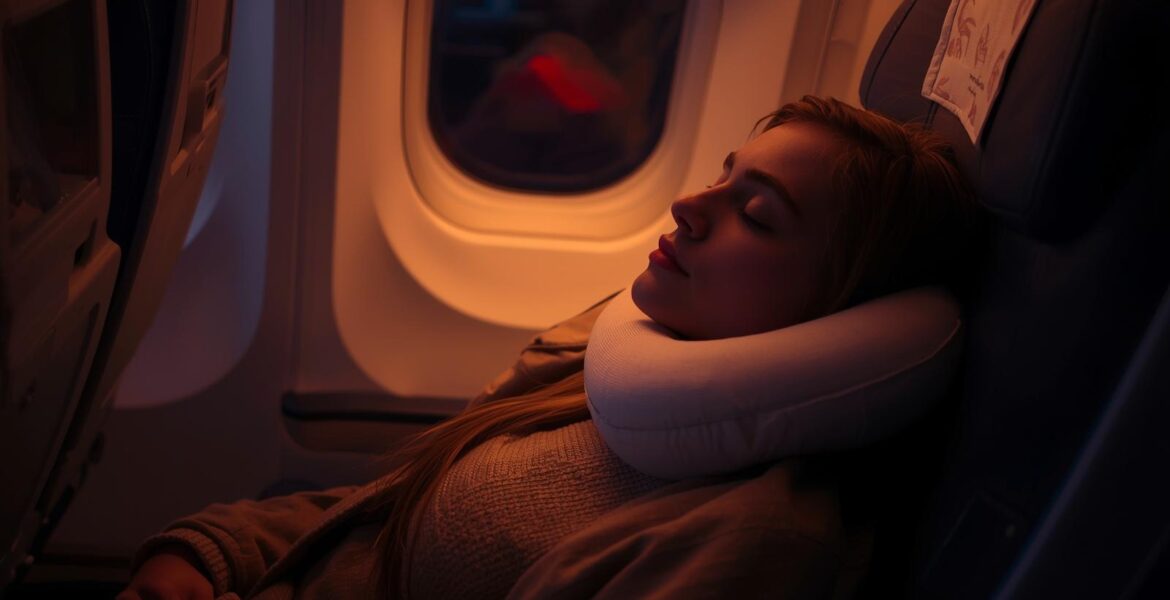The gentle hum of the airplane’s engines becomes a lullaby for some, while for others, it is a constant reminder of the miles yet to be covered. The quest for a restful sleep amidst the clouds often seems elusive, but with thoughtful preparation and mindful techniques, it becomes attainable. In this guide, we offer you the best tips for sleeping on a plane, transforming your in-flight experience into a serene journey.
Air travel, with its confined spaces and fluctuating cabin conditions, presents unique challenges to achieving quality sleep. The constant noise, limited space, and the irregular schedule of flights disrupt our natural sleep patterns. However, recognizing these challenges is the first step in overcoming them and maximizing comfort.
Before you even set foot on the plane, the groundwork for a restful journey begins. Preparation is not merely about packing but curating an environment conducive to relaxation.
Selecting the right seat is paramount. Aim for a window seat where you can lean against the wall, providing a makeshift headrest. Avoid seats near restrooms due to noise and frequent foot traffic. For the ultimate in comfort, consider seats with extra legroom or those in the premium cabin if your budget allows.
Dress in layers to adapt to the cabin’s varying temperatures. Opt for breathable, loose-fitting clothes that allow for movement. A cashmere scarf or a soft shawl can double as a blanket or a pillow, providing warmth and comfort.
Once aboard, certain strategies can help ease you into a restful slumber. These tips for sleeping on a plane are designed to minimize disturbances and create a peaceful atmosphere.
Noise-canceling headphones or earplugs can significantly reduce ambient sounds, such as engine hum and fellow passengers’ chatter. Listening to white noise or calming music can further enhance relaxation.
A sleep mask can block out unwanted light, helping to regulate your body’s internal clock. Choose a mask that fits comfortably and effectively blocks out light.
Incorporate relaxation techniques such as deep breathing or meditation to calm your mind. Visualize a peaceful place or focus on your breathing rhythm to transition into a state of relaxation.
What you consume before and during the flight can influence your ability to sleep. Making mindful choices about food and drink can aid in achieving restful slumber.
Hydration is crucial, but avoid excessive caffeine and alcohol, as they can disrupt sleep patterns. Opt for herbal teas or water to stay hydrated without the stimulating effects of caffeine.
Choose light meals before flying and avoid heavy, rich foods that can cause discomfort. A small snack like a banana or a handful of nuts can keep hunger at bay without disrupting digestion.
Many airlines offer amenities designed to enhance comfort and sleep quality. Utilize these to your advantage.
While not all airline-provided blankets and pillows are created equal, they can be supplemented with your own travel blanket or pillow for added comfort.
Take advantage of the reclining function of your seat, adjusting it to a comfortable angle that supports your back and neck. Remember to be considerate of the passenger behind you when reclining.
Upon arrival, adjust to the local time zone to mitigate jet lag. Spend time outdoors in natural light, stay active, and take short naps if needed to reset your body clock.
Sleeping on a plane does not have to be an unattainable dream. By preparing thoughtfully, employing strategic onboard practices, and making smart consumption choices, you can transform your flight into a restful journey. These airplane sleep tips are designed to help you arrive at your destination refreshed and ready to embrace the experiences that await, with an open heart and a light footprint.
Embrace the journey, and let the skies become your sanctuary.


